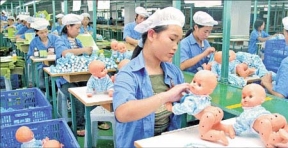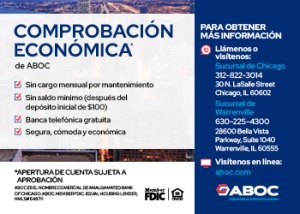
by Daniel Nardini
As Christmas season approaches, toy making is in full swing. Factories in China are most busy at this time since the holiday season in western countries is fast coming up. There is no doubt that China is the toy making capital of the world, and there is no question that major toy companies in the U.S. will prepare commercials and sales promotions for all the “latest” toys that will come on the market. One of the biggest toy companies in the world, Mattel, will be especially busy promoting the upcoming Barbie dolls, diecast cars and playsets, Disney toys, etc. But what about the factories where the toys are produced? What are they like for the average worker? Mattel had long ago developed a code of conduct on how workers should be treated. It is all nice and good, but reports filed by China Labor Watch on the true working conditions at Chinese factories making toys for Mattel fall way short of Mattel’s code of conduct.
If anything, it could not be more nightmarish. In those toy factories which make toys for Mattel, workers are not properly trained to handle the machinery. This is a danger in of itself as it can lead to serious injuries and even death later on. Workers are forced to do between 84 and 110 hours a month overtime (without being paid for it) in excess of the maximum 36 hours established under Chinese law. Many workers are forced to stand 10 to 13 hours a day to do their work. There are cases of wages not being paid on time, and in a growing number of cases workers are robbed of their wages. Those dormitories workers have to stay in (because they live too far from home) are hot and over-crowded. Workers are not always given safety equipment, or are not told how to properly use safety equipment when working in dangerous work environments or with dangerous chemicals. Workers work in unsafe factory floors where fire exits are blocked or bolted, and fire extinguishers and the sprinkler systems do not work.
On top of all this, these toy factories simply dump hazardous chemicals and other pollutants into the rivers or farm fields—thereby contaminating the country’s waterways and food supply. This essentially is what goes into making toys for children to play with all around the world. It is a chamber of horrors scenario that beggars the imagination. If a worker is crippled or killed, that is this person’s tough luck. Likewise, their families are either inadequately compensated or not compensated at all. The life of a Chinese worker is worth nothing to the toy industry, and any worker injured or killed and be easily replaced. Chinese workers have no way to complain about their conditions—the boss of the factory is more often than not a member of the ruling Communist Party of China. There are no independent unions in China; they are controlled by the Communist Party as well. Given all this, the life of the average Chinese worker could not be worse.
Of course, China is not the only country that treats its workers like dirt. This is very true in so many, many Third World countries. But China is THE top toy maker, and if you go to your nearest Walmart or Target stores you will be extremely hard up trying to find toys not made in China or not made in other Third World countries like Indonesia or Thailand. The working conditions in these two countries are somewhat better than China, but not by much. Corporate businesses in this country want to sell products for maximum profits, and they do not care how cheaply they are made. For those who are looking for quality made products, and especially toys, you will have to look through the Internet or in catalogs where toys are still made in U.S.A.. and Germany—the other top two countries that still make toys. Toys made in U.S.A. and in Germany are made by workers who are over all well treated, well paid, work in over all safe conditions, are not working in sweat shop conditions, are paid for overtime, and work in facilities that meet all safety standards. In my view, how a toy is made is as important as the toy itself. Something to think about come Christmas time.
 Senator Dick Durbin Not Seeking Re-Election April 24, 2025
Senator Dick Durbin Not Seeking Re-Election April 24, 2025








Behind the Making of Toys in China
by Daniel Nardini
As Christmas season approaches, toy making is in full swing. Factories in China are most busy at this time since the holiday season in western countries is fast coming up. There is no doubt that China is the toy making capital of the world, and there is no question that major toy companies in the U.S. will prepare commercials and sales promotions for all the “latest” toys that will come on the market. One of the biggest toy companies in the world, Mattel, will be especially busy promoting the upcoming Barbie dolls, diecast cars and playsets, Disney toys, etc. But what about the factories where the toys are produced? What are they like for the average worker? Mattel had long ago developed a code of conduct on how workers should be treated. It is all nice and good, but reports filed by China Labor Watch on the true working conditions at Chinese factories making toys for Mattel fall way short of Mattel’s code of conduct.
If anything, it could not be more nightmarish. In those toy factories which make toys for Mattel, workers are not properly trained to handle the machinery. This is a danger in of itself as it can lead to serious injuries and even death later on. Workers are forced to do between 84 and 110 hours a month overtime (without being paid for it) in excess of the maximum 36 hours established under Chinese law. Many workers are forced to stand 10 to 13 hours a day to do their work. There are cases of wages not being paid on time, and in a growing number of cases workers are robbed of their wages. Those dormitories workers have to stay in (because they live too far from home) are hot and over-crowded. Workers are not always given safety equipment, or are not told how to properly use safety equipment when working in dangerous work environments or with dangerous chemicals. Workers work in unsafe factory floors where fire exits are blocked or bolted, and fire extinguishers and the sprinkler systems do not work.
On top of all this, these toy factories simply dump hazardous chemicals and other pollutants into the rivers or farm fields—thereby contaminating the country’s waterways and food supply. This essentially is what goes into making toys for children to play with all around the world. It is a chamber of horrors scenario that beggars the imagination. If a worker is crippled or killed, that is this person’s tough luck. Likewise, their families are either inadequately compensated or not compensated at all. The life of a Chinese worker is worth nothing to the toy industry, and any worker injured or killed and be easily replaced. Chinese workers have no way to complain about their conditions—the boss of the factory is more often than not a member of the ruling Communist Party of China. There are no independent unions in China; they are controlled by the Communist Party as well. Given all this, the life of the average Chinese worker could not be worse.
Of course, China is not the only country that treats its workers like dirt. This is very true in so many, many Third World countries. But China is THE top toy maker, and if you go to your nearest Walmart or Target stores you will be extremely hard up trying to find toys not made in China or not made in other Third World countries like Indonesia or Thailand. The working conditions in these two countries are somewhat better than China, but not by much. Corporate businesses in this country want to sell products for maximum profits, and they do not care how cheaply they are made. For those who are looking for quality made products, and especially toys, you will have to look through the Internet or in catalogs where toys are still made in U.S.A.. and Germany—the other top two countries that still make toys. Toys made in U.S.A. and in Germany are made by workers who are over all well treated, well paid, work in over all safe conditions, are not working in sweat shop conditions, are paid for overtime, and work in facilities that meet all safety standards. In my view, how a toy is made is as important as the toy itself. Something to think about come Christmas time.